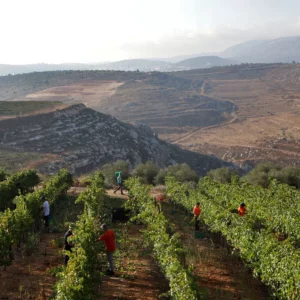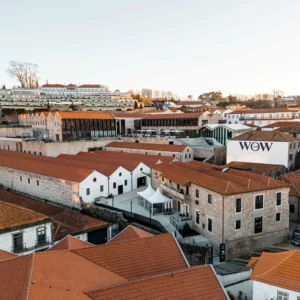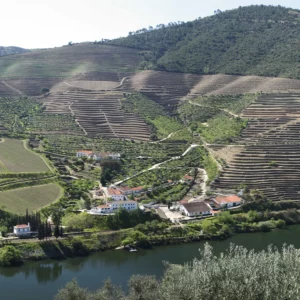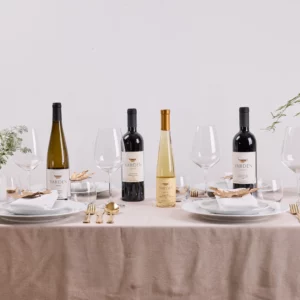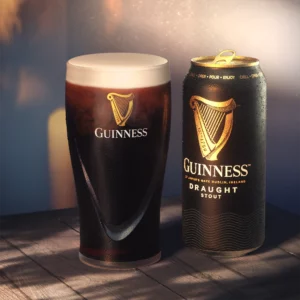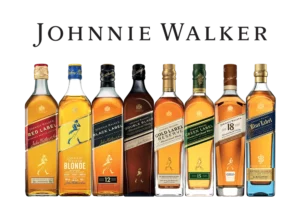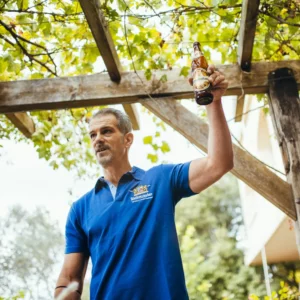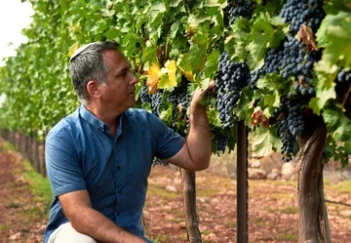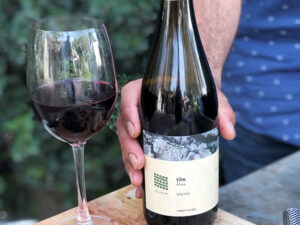The history of Israeli wine may be told through three grape varieties, which were dominant during different periods. The first was Alicante Grenache, before 1948, then Carignan after the founding of the State of Israel and now, Cabernet Sauvignon in the 2000’s.
When the settlers of the First Aliyah planted grapes, the experts chose varieties from the South of France because of similarities of climate. In fact it Alicante was the dominant variety until the 1960’s. Now it is being revived here using its more familiar name, Grenache.
The next dominant grape was Carignan, which has been ever present since the 1870’s when it was planted at Mikve Israel. It was appreciated because of the high yields it could deliver and its flexibility. It could be used to make red grape juice, Kiddush wine or red table wines.
Without doubt, wine drinkers have drunk far more Carignan than they are aware of. I remember Daniel Rogov z”l, saying of a prominent winery’s so called Cabernet Sauvignon, “that was the finest Carignan I have tasted!” In the 2000’s this variety was revived and reborn thanks to the efforts of Vitkin and Carmel wineries and lately, Recanati too.
However today, the number one variety in Israel is the regal Cabernet Sauvignon. Baron Edmond de Rothschild insisted on bringing it to Israel in the 1880’s, but it took 100 years to catch on. The Carmel Special Reserve 1976 and Yarden Cabernet Sauvignons of 1984 and 1985 showed the wisdom of the Baron’s decision, and the quality revolution began. These days there is enough Cabernet planted, that if it says Cabernet Sauvignon on the label of even the inexpensive wines, then it is likely to be correct.
Israel is not known for one particular variety in the same way as California is known for Zinfandel, Argentina for Malbec and New Zealand for Sauvignon Blanc. Nor has Israeli ever had real indigenous varieties, or so we thought. That was before Dr Shibi Drori’s groundbreaking research to isolate and identify indigenous grape varieties in Israel. So far they have found 120 local varieties, of which twenty may be suitable for winemaking.
At the same time, there have been some fascinating new wines released recently, each from local varieties. The Cremisan Hamdani Jandali white blend and Cremisan Dabouki entered the market a few years ago and they were followed more recently by the Recanati Marawi. If these are added to the Segal Argaman, it is clear we better become used to some new names.
The Cremisan Monastery, which has been making wine since 1885, was the first to come out with a wines from local varieties. Their blend of Hamdali and Jandali was an unusually good wine in the white Rhone style. These are two varieties that are grown primarily in Bethlehem and Hebron by Arab growers. Over eighty five percent of the Palestinian vineyards are situated in the Bethlehem and Hebron areas.
I remember once visiting Hebron and thinking I was in Spain, with vineyards everywhere, though they are used only for table grapes, syrup or raisins. The Hamdani and Jandali were developed over time as table grapes. They are tasty which is why they survived when wine grapes were grubbed up.
The Jandali is the more aromatic with flowery aromas, but lacks a middle palate. The Hamdani has citrusy, lime and grapefruit aromas with a lengthier finish. It has more depth, the ability to stand up to barrel aging and better potential. They show well together in a blend.
In the 19th century, the Shor and Teperberg wineries in the Old City of Jerusalem used these varieties to make wine. The grapes were delivered to the Old City on donkeys. A 16th century scholar, Rabbi Menahem di Lonzano, mentioned them as varieties of wine in Jerusalem. Some even say there is a mention of them in the Talmud, dating back to 220 AD. Whatever the folklore, these are old varieties that were used to make wines long before any problems between Israelis and Palestinians came to the fore.
The Recanati Marawi 2014 was launched a few months ago. Marawi is a synonym for Hamdani. Simply, around Jerusalem and Bethlehem the variety is known as Hamdani and when in the past it was grown in the Judean foothills and southern coastal plain it was known as Marawi.
The berries are large, grown at 900 meters elevation on what is known as a Hebron style pergola. They are dry farmed, with no irrigation. The wine was barrel fermented in old, used barrels and aged sur lies (on its lees.) Only 2,500 bottles were produced.
The wine has lemony, honey, peach aromas a certain mineral texture, but despite their efforts, it is somewhat lacking in acidity. However it was without question the most interesting new wine of 2015 and attracted the interest of the international media, including CNN and the New York Times.
Amar Kardosh, once export manager of Cremisan, was quoted as saying: “As usual in Israel, they declare that falafel, tehina, tabouleh, hummus and now Jandali grapes are Israeli …..these are Palestinian grapes grown in Palestinian vineyards.” A Holy Land indigenous grape, Palestinian grower and Israeli winemaker is the reality, and I see it as a beautiful cooperation.
There can be no such complaints about Dabouki which has been grown from the Mount Carmel region, down to the Judean plain for centuries. There are also vineyards in Bethelem and Hebron. The Dabouki variety is said to have originated in Armenia. It means ‘sweetness’ in Arabic.
It was mainly used for distillation of brandy and local Arak producers, like El Namroud, still use it for producing their base wine before distillation and the addition of anise. Similarly the Lebanese variety Obeideh was far more associated with Arak than wine, until Chateau Musar used it in a white blend.
Now, Avi Feldstein has made a varietal Dabouki from fifty year old vines in the Mount Carmel area. He has aged the wine on its lees in tank, stirring them periodically (bâtonnage in French), in order to improve flavors and complexity. Cremisan Monastery also produce a Dabouki from Bethlehem vineyards. The wines tend to have a floral tropical nose, a medium body, a broad mouth feel, rather like a fat Chardonnay and a rounded finish. The Feldstein version is enticing. I finished my glass without realizing.
Local red grapes are not so successful. Cremisan Winery sell a Cremisan Balady from an indigenous variety. It certainly is not at the standard of the white varieties. The red is light, thin with a pronounced acidity. However in the research conducted by Shibi Drori, there are some potential red varieties with names like Balouti and Zeitani that offer more hope for the future. As it is, the most Israeli red wine variety that you are likely to meet is Argaman.
Argaman, which means deep purple in Aramaic, was a grape created by Professor Roy Spiegel at the Volcani Institute of Agriculture. It was the result of a cross between Carignan, the work horse grape of Israel, with the Portuguese variety Souzoa. It was created in 1972, experimented with in the eighties and planted commercially in the early nineties.
The first wines were notable for their color but had little sophistication. The grape was planted in the hot coastal regions, mainly in the Judean Shefela, and used primarily for blends.
In 1999 a winemaker who liked challenges, saw unfulfilled potential in this variety. This was Avi Feldstein, then of Segal Wines. He planted Argaman in the Upper Galilee at the Dovev vineyard, at an altitude of over 700 meters above sea level. He saw himself as a viticultural Professor Higgins, who could coax something from this Eliza Doolittle variety, overcoming the genetical make up with the right care in the vineyard and winery.
By correct pruning, skilled canopy management and drastically reducing yields, he ended up with far better fruit than was produced in the hot coastal plain. Recognizing a lack of tannin in the grapes, he fermented them on Merlot skins.
The result was an excellent wine which was deep colored, with ripe red berry fruit. It was rich and plummy on the palate with a well weighted, even balanced finish. The Segal Rechasim Argaman 2007, even won a major gold medal in one of France’s main competitions. As such, the much maligned grape was able to take a bow.
Avi Feldstein is now independent but is still fascinated by Argaman. He is now making it from Givat Nili vineyards. He is still the creative experimenter, this time drying the grapes to increase the concentration.
So wine lovers, be on the lookout for some authentic Levantine wines from local varieties. Wines like Marawi, Dabouki, Hamdani Jandali and Argaman are well worth seeking out and tasting for interest and education. Who knows they might herald a new dawn for Israeli wine. One day, producing wine from Israeli varieties that have been here hundreds of years, may even become the norm!



